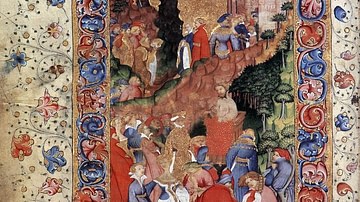Review

| Rating: | |
|---|---|
| Title: | American Vikings: How the Norse Sailed into the Lands and Imaginations of America |
| Author: | Martyn Whittock |
| Audience: | High School |
| Difficulty: | Medium |
| Publisher: | Pegasus Books |
| Published: | 2023 |
| Pages: | 271 |
Martyn Whittock’s “American Vikings” is a vivid introduction to the history of Vikings settling in North America and their enduring influence on American national identity, politics, and popular culture. Its comprehensive and engaging style, encompassing everything from medieval Norse sagas to the Marvel Cinematic Universe, will be appealing to both high school and college students, as well as the general reader.
In a globalized world, the convergence of different nationalities and cultures often transforms societal notions of a shared identity. This sometimes results in debates regarding history, heritage, and cultural belonging, which make their way into today's headlines and political arenas. With those questions in mind, Martyn Whittock’s second book on Vikings, American Vikings: How the Norse Sailed into the Lands and Imaginations of America, examines the history of Vikings reaching North America and asserts that long after their departure from what they called Vinland, Vikings have found their way into the “cultural DNA of North America” (220). In doing so, he provides a compendious history of their arrival to modern-day Canada and demonstrates that this history began with the medieval sagas and ends "with modern media presentations, merchandising images, and the polarized politics of the 2020s" (x).
The author divides the book into four sections. The first three chapters provide an overview of Viking history and their worldviews, illustrating that historical Vikings were much different than modern cultural depictions. Chapters Four, Five, and Six center on their arrival to North America according to the two sagas of Erik the Red and the Greenlanders. Bjarni Herjolfsson returned to Greenland after a misguided voyage and told Leif Erikson of timbered land to the west. Around the year 1000, Erikson and other subsequent expeditions led to naming the region Vinland. The narrative is wisely balanced, devoting attention to indigenous peoples (thought to have been either the Beothuk or Thule) who encountered the Norse venturers. Armed conflicts between the groups eventually drove the Vikings to abandon the area. Next, it discusses evidence from the archaeological site L’Anse aux Meadows. The author then contextualizes their presence with other claims of the first Europeans in the Americas.
The third section considers the legacy of Norse heritage in the United States. As immigration to America grew, so did the desire to showcase a Norse identity in American history. This led to local claims, especially in the Midwest, of purported Viking artifacts, ranging from pennies to runestones. While they are almost certainly hoaxes, the debate around their authenticity says more about how Americans connect their cultural identities to the past, rather than telling us about the past itself. The book's last quarter follows the coinciding histories of Vikings as a political and pop culture symbol. Assertions of Viking heritage fed the rise of far-right nationalism in the United States during the 20th century. This, Whittock points out, correlates to the QAnon conspiracy group appropriating Viking symbols and the widely publicized images of a “Viking” at the January 6th Capitol attack. Meanwhile, the Golden Age of Comic Books (~1938-1956) birthed popular superheroes like Marvel’s Thor, a reflection of how in recent decades audiences have seen Vikings getting Hollywood’s star treatment.
Whittock’s experience as a textbook author and newspaper columnist makes for a digestible and spirited read. The various subtopics in each chapter provide readers with concise takeaways and a clear understanding of how and why Vikings continue to be relevant today. Conversely, the book’s breadth leaves certain elements under-evaluated. Chapter Eleven's subsection titled “The Vikings Co-opted as Part of Ethnic and Racial Theories” only reaches a page and a half. After reading, those looking for further analysis may wish to consult Gordon Campbell’s Norse America: The Story of a Founding Myth. Images of archaeological artifacts and the disputed relics would have nicely complemented the text, and maps could have helped readers unfamiliar with Canada’s Atlantic Provinces.
Overall, this is a memorable and engaging resource for the classroom, appropriate for high school and college students alike, alongside history enthusiasts. With its thought-provoking prose and well-rounded scope, it serves as an excellent primer on how historical events actually occur, how subsequent generations conceptualize the past, and how they utilize it.
About the Reviewer
Cite This Work
APA Style
Trimnal, J. (2023, August 09). American Vikings: How the Norse Sailed into the Lands and Imaginations of America. World History Encyclopedia. Retrieved from https://www.worldhistory.org/review/377/american-vikings-how-the-norse-sailed-into-the-lan/
Chicago Style
Trimnal, Jonah. "American Vikings: How the Norse Sailed into the Lands and Imaginations of America." World History Encyclopedia. Last modified August 09, 2023. https://www.worldhistory.org/review/377/american-vikings-how-the-norse-sailed-into-the-lan/.
MLA Style
Trimnal, Jonah. "American Vikings: How the Norse Sailed into the Lands and Imaginations of America." World History Encyclopedia. World History Encyclopedia, 09 Aug 2023, https://www.worldhistory.org/review/377/american-vikings-how-the-norse-sailed-into-the-lan/. Web. 29 Apr 2025.




